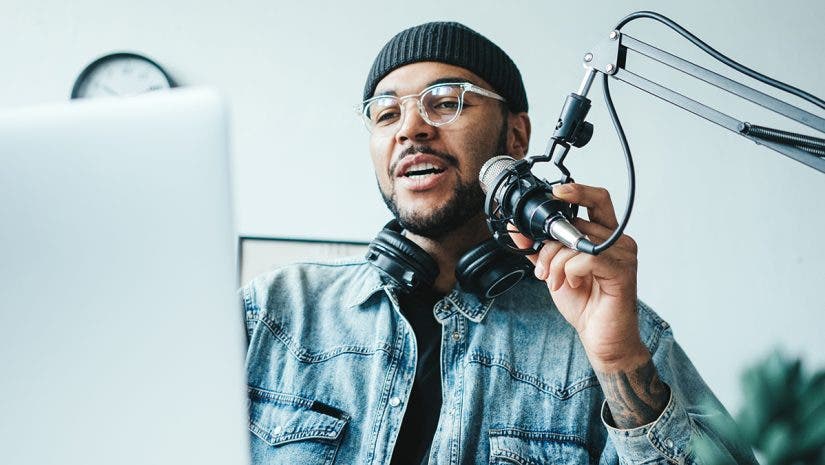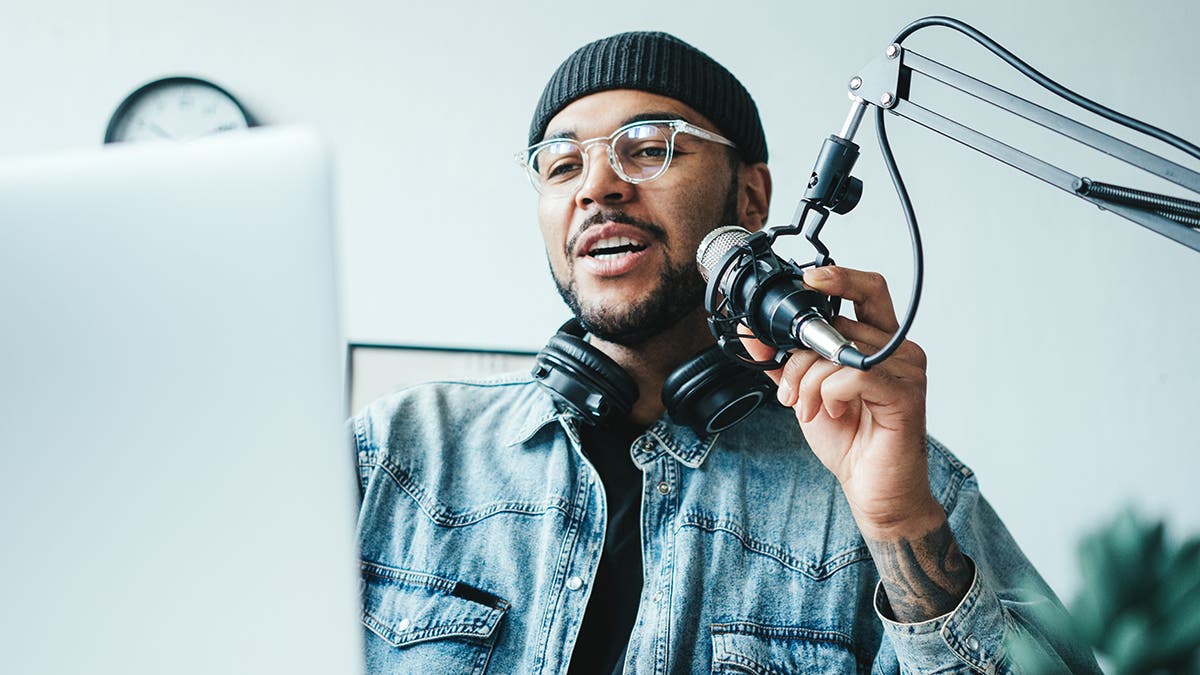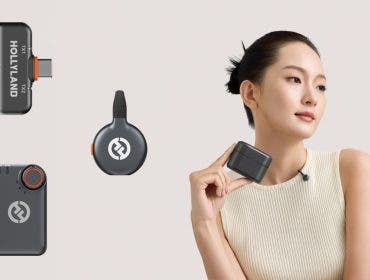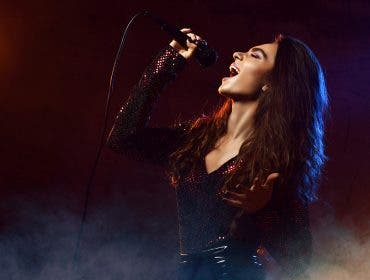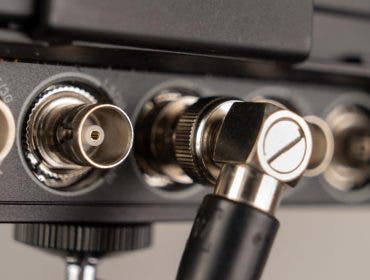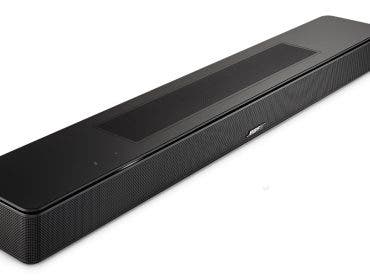A great podcast starts with a great idea followed by clear audio. After choosing your show topic, one of the most important decisions is which type of microphone. Picking out the right microphone is a critical first step. If you’re new to podcasting, you may not even realize that there are two primary types of microphones: dynamic mics and condenser mics. Each one can be good for a specific purpose, but selecting the wrong one can mean excessive background noise, unclear vocals, or time-consuming post-production edits. Dynamic vs. condenser mic, which should you choose?
I’ve been hosting the Beginner Photography Podcast since 2016 and in this guide, I’ll break down the differences between dynamic vs. condenser mics, helping you determine which fits your recording setup, budget, and podcasting style so that you’ll know exactly which type of mic to buy to get professional quality sound for your podcast.
What’s the Difference Between a Dynamic vs. Condenser Mic?
Before you buy a microphone, it’s important to understand the key differences between dynamic vs. condenser mics.
Simply put dynamic mics are best forHome offices, on location interviews, and in person conversations while Condenser mic are best for solo podcasters recording in a controlled and quiet room.
Dynamic Microphones: Built for Any Environment
Dynamic microphones are known for their durability and ability to block out background noises. These mics are commonly used in radio broadcasting and live performances because they are less sensitive to subtle sounds, focusing only on what’s directly in front of them, you!
Benefits of Dynamic Mics:
- Less sensitive to background noise—perfect for rooms that aren’t soundproofed.
- No need for additional power—just plug it into an interface or recorder.
- More durable and travel-friendly than condenser microphones.
Negatives of Dynamic Mics:
- Slightly less detailed sound than condenser mics.
- Requires the speaker to stay close to the microphone for the best results.
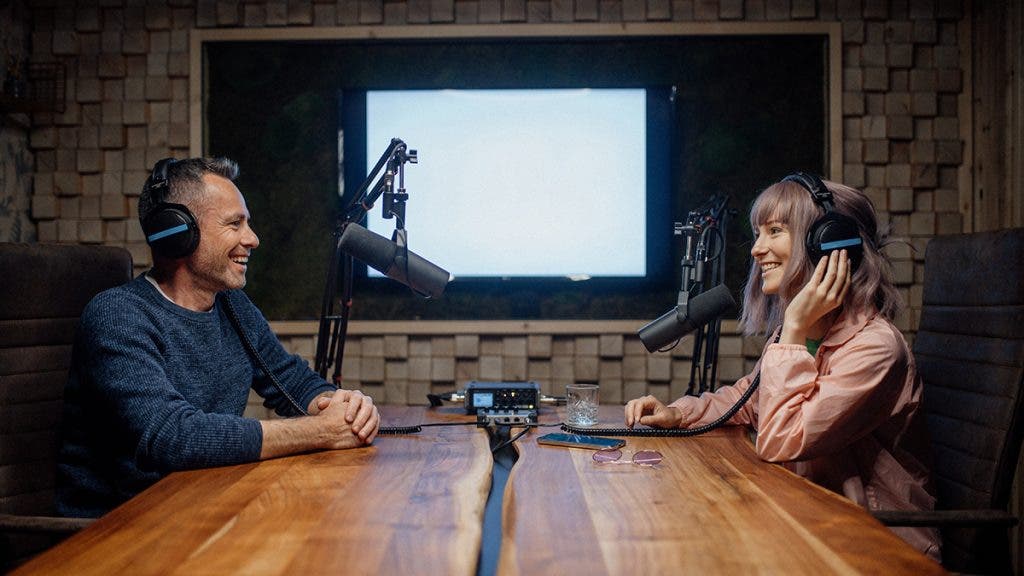
Condenser Microphones: Crisp, Studio-Quality Audio
Condenser microphones are highly sensitive and can capture a wide range of vocal details. This makes them perfect for podcasters who record solo in a quiet, treated environment. However, they will pick up more background noise, so using them in an untreated space can lead to unwanted echoes and interference.
Benefits of Condenser Mics:
- Captures crisp, detailed audio.
- Ideal for storytelling, narration, and virtual interviews.
- Preferred for voiceovers and studio-grade recordings in a studio-grade environment.
Negatives of Condenser Mics:
- Requires 48V phantom power, meaning you’ll need an audio interface or USB connection.
- More sensitive—picks up background noise, keyboard clicks, and echoes.
- It is not ideal for on-location or noisy environments.
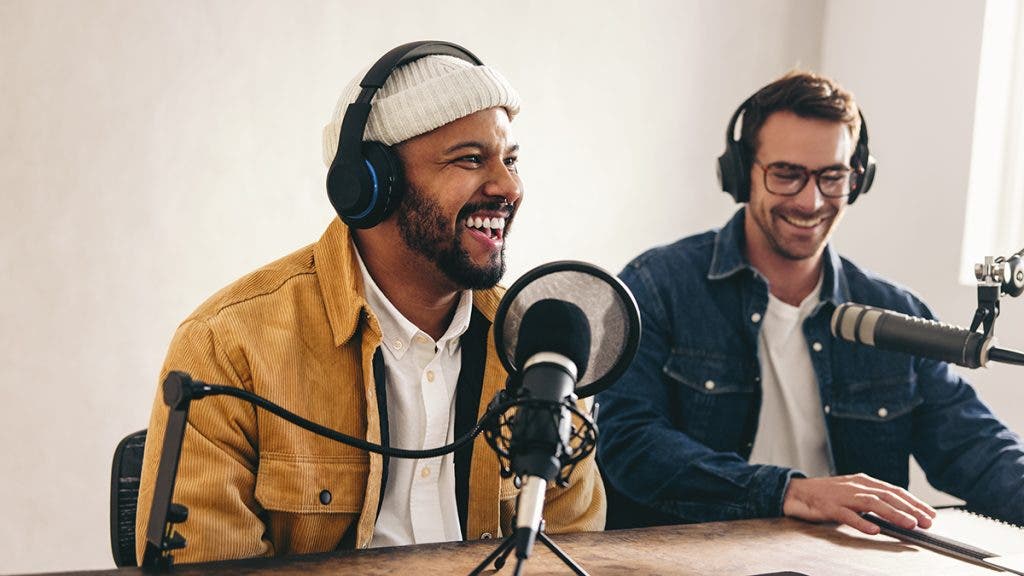
Which Microphone Should You Choose for Your Podcast
Your podcast format and recording environment will determine whether a dynamic vs. condenser mic is best for you.
Dynamic vs. Condenser Mic: If You’re Recording in a Home Office or Untreated Space
Best choice: Dynamic microphone
Most podcasters (myself included) start recording from home, often in spaces that aren’t professionally treated for sound. A dynamic mic will help reduce background noise, making your voice sound clearer without picking up every creak of your chair or hum of your computer fan.
Dynamic vs. Condenser Mic: If You’re Recording a Solo Podcast in a Sound-Treated Space
Best choice: Condenser microphone
If you have a quiet room with proper acoustic treatment (such as foam panels or recording in a closet), a condenser mic can deliver studio-quality sound with rich vocal details.
Dynamic vs. Condenser Mic: If You’re Recording In-Person Interviews
Best choice: Dynamic microphone
When two or more people are in the same room, using condenser mics can lead to excessive room noise, echo, and mic bleed (when one mic picks up another speaker’s voice). Dynamic mics are better at isolating each voice and preventing unwanted interference.
Dynamic vs. Condenser Mic: If You’re Recording Virtual Interviews or Remote Podcasts
Best choice: Condenser microphone (if your space is quiet) or Dynamic microphone (if your space has background noise)
If you’re recording a remote interview over Zoom, Riverside, or SquadCast, a condenser microphone can deliver crisp, professional audio, but only if you’re in a quiet, treated space. Since condenser mics pick up more detail, even small noises like a ceiling fan or keyboard clicks can become distracting in the final recording.
If your home office isn’t perfectly quiet or has some background noise (pets, kids, HVAC systems, etc.), a dynamic microphone is the better choice. It will help isolate your voice, ensuring your guest hears you clearly without unnecessary distractions.
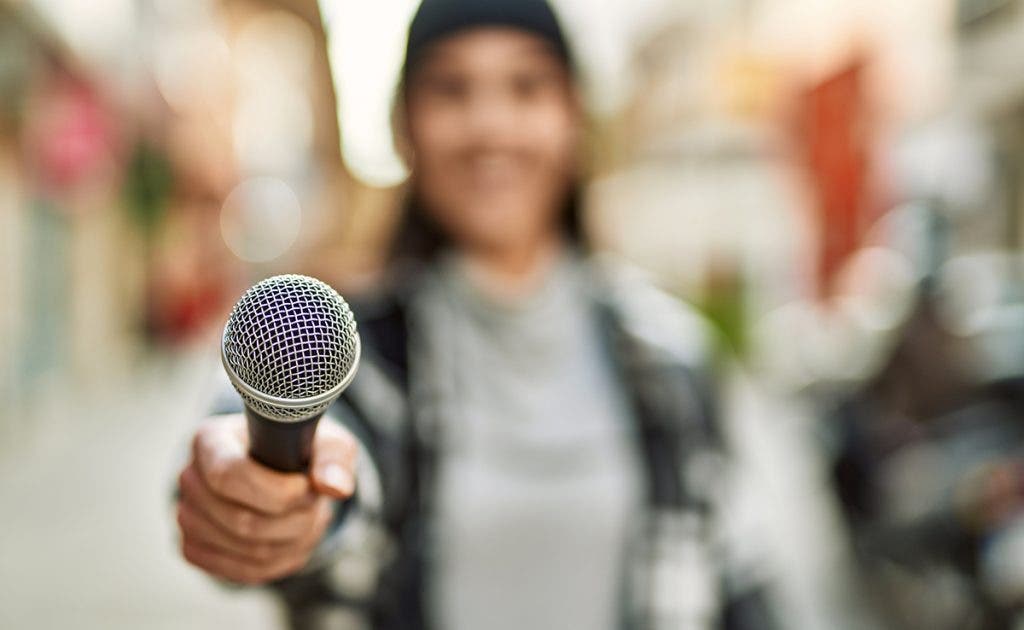
Dynamic vs. Condenser Mic: If You’re Recording On Location or in Noisy Environments
Best choice: Dynamic microphone
Dynamic mics don’t require phantom power, making them ideal for recording on the go. Whether you’re at a conference, a coffee shop, or outdoors, dynamic mics will help focus on your voice while blocking out distracting sounds.
The Blue Yeti Mistake: Why Many New Podcasters Struggle with Sound
One of the most common microphones that beginners buy is the Blue Yeti. It’s a well known and affordable condenser microphone that can sound great in the right environment. However, it’s often used incorrectly leading to noisy recordings.
Common mistakes with the Blue Yeti:
- Wrong mic placement: Many users don’t realize it’s a side-address mic, meaning you should speak into the front, not the top.
- Wrong pickup pattern: If set to “omnidirectional,” it will pick up everything in the room, including background noise.
- Noisy environments: Because it’s a condenser mic, it captures every little sound, making it difficult to use in untreated spaces.
If you need a plug-and-play option, consider a USB dynamic mic like the Samson Q2U, Shure SM58, or Shure MV7 instead.
Which Mic Should You Get For Your Podcast?
Here are some popular podcasting microphones to consider, depending on whether a dynamic or condenser mic is best for you.
Best Dynamic Microphones for Podcasting
Shure SM7B ($$$)
Used by top podcasters like Joe Rogan, Mel Robbins, and Tim Ferriss. Warm, broadcast-quality sound but requires a good preamp.
Shure SM58 ($)
A budget-friendly, durable mic that is very portable and often used for on-location interviews. Great sound for the price.
Rode PodMic ($$)
My personal favorite. It has a warm, inviting sound, perfect for desk setups.
Best Condenser Microphones for Podcasting
Blue Yeti ($$)
USB-only, meaning it must be plugged directly into a computer. Works best in controlled spaces.
Rode NT1 Signature Series ($$$)
A high-end condenser mic with ultra-low noise and professional-grade audio clarity.
A great dynamic or condenser mic won’t fix bad recordings, but choosing the right one will make your podcast sound more professional without hours of post production edits. It may take a few mics to find one that works best with your voice and show format so invest wisely, test your setup, and start recording!
